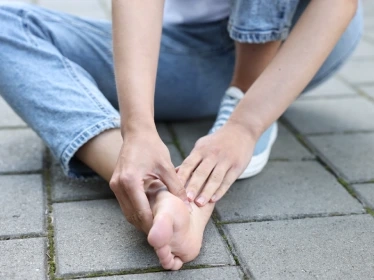
Heel pain is a common issue that many people experience at some point. It can develop gradually or appear suddenly, often caused by underlying conditions such as plantar fasciitis, heel spurs, or issues related to the achilles tendon. While symptoms may vary, the discomfort can easily affect your daily routine, making early support an important consideration.
Understanding the Possible Causes of Heel Pain
Heel pain can occur due to a combination of overuse, poor footwear, or structural imbalances in the feet. Conditions like plantar fasciitis place strain on the thick band of tissue along the bottom of the foot, while achilles tendon discomfort may result from tight calves or sudden increases in activity. Heel spurs, on the other hand, tend to form in response to ongoing stress on the heel bone.
By identifying what’s behind the discomfort, it becomes easier to explore the next course of action.
Starting with At-Home Exercises for Heel Pain
If heel pain symptoms are mild, certain exercises might help manage the discomfort in the early stages. One of the more common ones involves stretching exercises and massage ball rolls, both of which can ease tension in the plantar fascia and surrounding muscles.
These are often a good starting point for individuals who experience discomfort during or after long periods of standing or walking. They might also support recovery when used consistently as part of a daily routine.

Supporting the Feet with Custom Insoles
In situations where foot structure plays a role — such as with flat feet or high arches — additional support may be needed to reduce strain or pain of the heel. This is where custom orthotics such as insoles can be helpful.
Unlike off-the-shelf insoles, custom insoles are designed to match the specific contours of your feet. They provide support where it’s needed and can help redistribute pressure more evenly. This not only improves comfort but may also reduce the risk of further irritation when walking or engaging in physical activities.
Non-Surgical Options When Heel Pain Persists
If home care and supportive footwear haven’t brought enough relief, other non-surgical options may be worth considering. One of these is extracorporeal shockwave therapy, a technique that uses sound waves to encourage a natural response in areas of ongoing discomfort.
Of the types available, focused extracorporeal shockwave therapy is often preferred. It targets deeper tissues more precisely, making it suitable for cases where heel discomfort has lingered — particularly when linked to conditions like plantar fasciitis, despite earlier attempts at managing the pain through stretching, orthotics, or better shoes.
In more complex scenarios involving structural changes or chronic wear, further steps may be needed. If surgical input is required, your podiatrist will advise on next steps and refer you to an orthopaedic specialist for further assessment.
Preventing Heel Pain from Returning
Beyond pain relief, it’s also important to think about long-term foot health. This often involves reviewing your footwear, adjusting your activity levels, or incorporating specific heel strengthening exercises into your routine.
A podiatrist can provide tailored guidance to help you make informed choices that not only address your current discomfort but also reduce the likelihood of recurrence down the line.
Book a Visit with Straits Podiatry
If heel pain is affecting your daily movement or quality of life, getting the right support can make all the difference. At Straits Podiatry, we offer practical care solutions to help you manage discomfort and maintain your mobility.
Part of Healthway Medical Group's Allied Health Division, we are led by a team that values integrity, precision, and person-centred care. We treat each patient with the same level of attention we would give our own family, and we’re committed to helping you take confident steps forward — one foot at a time.






